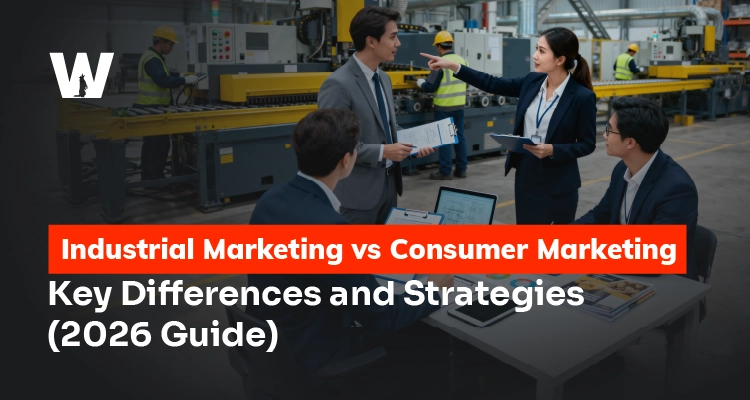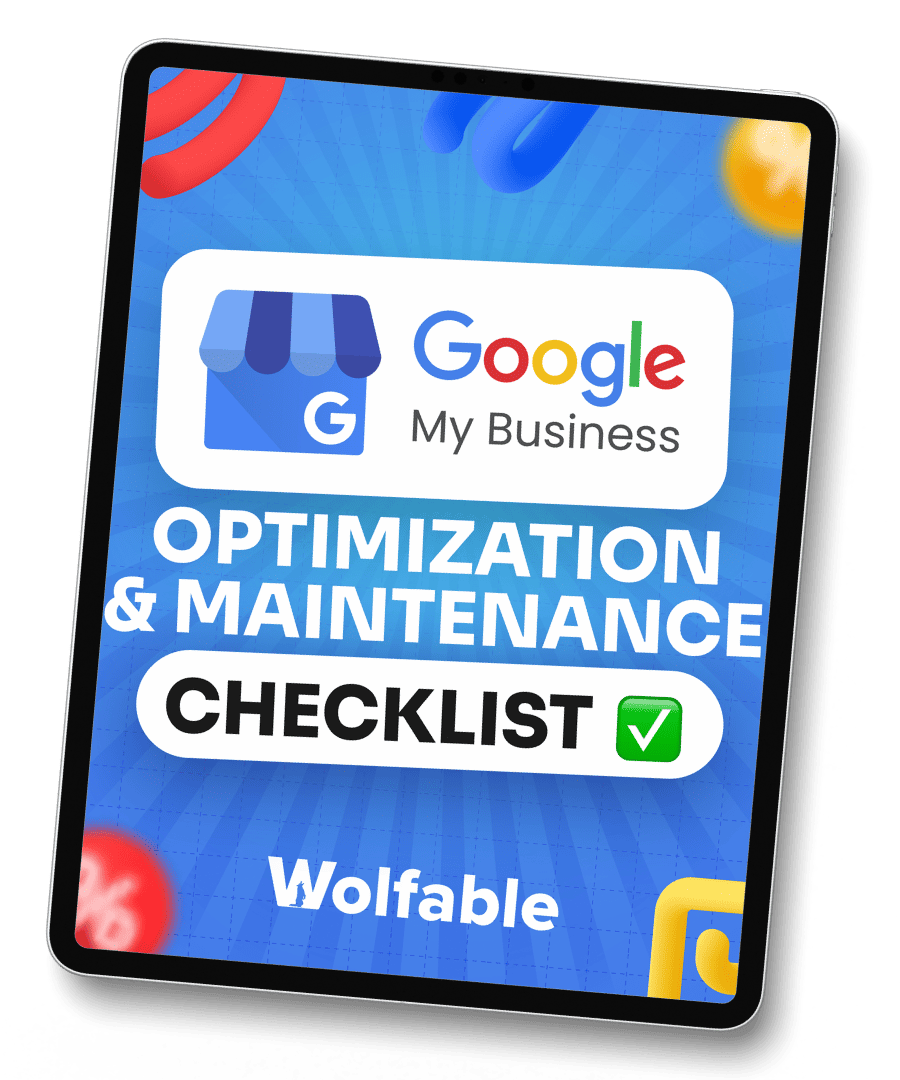Wraps up in 15 Minutes
The way consumers buy refrigerators, ovens, and washing machines has fundamentally changed. Consumers no longer rely solely on showroom foot traffic and print catalogs. Today, the customer journey starts with a Google search, a YouTube review, or a question posed to an AI assistant. For home appliance manufacturers, this shift isn't a threat—it's the single biggest opportunity for growth.
If you're still relying on traditional marketing to connect with consumers, dealers, and builders, you're leaving a massive amount of revenue on the table. A robust digital marketing strategy is no longer optional; it's the core engine for brand visibility, lead generation, and sales. At Wolfable, we specialize in building these engines for industrial and B2B clients, transforming their digital presence into a predictable growth machine.
This guide will walk you through the essential strategies to electrify your brand's online presence and dominate the digital shelf.
Why Is Digital Marketing Crucial for Appliance Manufacturers Today?
Digital marketing is essential because your customers—from individual homeowners to large-scale property developers—are now online. They research, compare, and form opinions about your products long before they ever step into a retail store or speak to a sales representative. A strong digital presence ensures you are part of that conversation from the very beginning.
This digital-first approach allows you to control your brand narrative, support your dealer network, and even open up direct-to-consumer (DTC) channels. It provides invaluable data on customer behavior, enabling you to refine products and marketing messages for maximum impact. Without it, you're invisible to a majority of your potential market.
Connecting Products to Strategy: What Do "Home Appliances" Include?
Before diving into how to market, it's crucial to understand the vast range of products that fall under the "home appliances" umbrella. A manufacturer's portfolio is diverse, and the marketing strategy for a coffee maker is fundamentally different from that of a high-end, built-in refrigerator. Recognizing these categories is key to tailoring your digital efforts effectively.
Home appliance manufacturers typically produce:
- Major Appliances (White Goods): These are the large, essential machines in a home. This category includes refrigerators, freezers, washing machines, clothes dryers, dishwashers, and cooking appliances like ovens, stoves, and cooktops. The customer journey for these is long and involves significant research.
- Small Appliances: These devices offer convenience and perform specific tasks, usually on a countertop. This includes microwaves, blenders, toasters, coffee makers, food processors, and vacuum cleaners. Marketing for these items often focuses on specific features, ease of use, and a lower price point.
- Emerging & Niche Categories: This includes the rapidly growing market for smart home-integrated appliances, as well as specialized items like air purifiers, robotic vacuums, wine coolers, and dehumidifiers. Digital marketing here is essential for educating consumers about new technology and its lifestyle benefits.
Your digital strategy must reflect this diversity. A PPC campaign for a small appliance might focus on impulse buys and promotions, while SEO for major appliances will target long-tail keywords related to research, comparisons, and reliability.

What Are the Core Pillars of a Winning Home Appliance Marketing Strategy?
A successful strategy isn't about using just one channel; it's about creating an integrated ecosystem where each pillar supports the others. This ensures you're reaching customers at every stage of their complex buying journey, from initial awareness to post-purchase loyalty.
Here are the non-negotiable components of a modern marketing plan for appliance manufacturers.
Why Is a High-Performing Website Your Most Important Digital Asset?
Your website is your digital flagship store. It's where consumers and dealers go for definitive information. A slow, confusing, or outdated website will shatter brand credibility and send potential customers straight to your competitors.
An effective manufacturer website must have:
- Intuitive User Experience (UX): Visitors should be able to easily find product categories, compare models, and access specifications.
- High-Quality Visuals: Crystal-clear images, 360-degree product views, and lifestyle photos are non-negotiable.
- Detailed Product Pages: Include all technical specs, dimensions, energy ratings, manuals, and warranty information in an easy-to-digest format.
- A Robust "Find a Dealer" Locator: This tool must be fast, accurate, and mobile-friendly to drive foot traffic to your retail partners.
Your website is the foundation of your digital strategy. At Wolfable, our Web Design & Development services focus on creating seamless, high-converting digital experiences that build trust and drive action.
How Can SEO Put Your Brand at the Top of Search Results?
Search Engine Optimization (SEO) is the process of making your website the top answer when a potential customer searches for a product like yours. When someone types "best energy-efficient French door refrigerator" or "quietest dishwasher 2025" into Google, you want your brand to appear first.
Effective SEO for appliance manufacturers involves:
- Keyword Targeting: Identifying and ranking for terms your customers use, from broad categories ("kitchen appliance packages") to specific features ("oven with air fry mode").
- Technical SEO: Ensuring your website is fast, mobile-friendly, and easy for search engines to crawl. This includes clean product page URLs and structured data that helps Google understand your product specifications.
- Local SEO: Optimizing your "Find a Dealer" pages so that local searches (e.g., "appliance store near me") lead customers directly to your retail partners. This is crucial for supporting your sales network.
Is Performance Marketing (PPC) Worth It for Appliance Brands?
Absolutely. While SEO is a long-term strategy, Pay-Per-Click (PPC) advertising delivers immediate visibility and traffic. Performance marketing allows you to place your products directly in front of buyers with high purchase intent, precisely when they are ready to buy.
Key PPC channels for your brand include:
- Google Shopping Ads: These visual ads display your product image, price, and brand right at the top of the search results. They are incredibly effective for capturing bottom-of-funnel buyers.
- Search Ads: Target users searching for competitor brands or specific problem-solving features. An ad for your "ultra-quiet garbage disposal" can capture a customer who is tired of their noisy, old unit.
- Social Media Ads: Reach audiences based on demographics, life events (like "new homeowners"), and interests (like "home renovation" or "interior design").
A well-executed PPC campaign provides a measurable return on investment, driving both online inquiries and in-store traffic.
How Does Content Marketing Build Trust and Educate Buyers?
Home appliances are a considered purchase. Customers invest significant time in research because they want to make the right choice for their home and budget. Content marketing is your opportunity to become their most trusted advisor during this process.
By creating valuable, informative content, you build authority and guide the customer's decision. This isn't about a hard sell; it's about being genuinely helpful.
Valuable content formats for appliance brands include:
- In-Depth Blog Posts: "How to Choose the Right Cooktop: Gas vs. Electric vs. Induction."
- Buying Guides: Downloadable PDFs comparing your different product series.
- Video Demonstrations: Short, engaging videos showcasing a unique feature, like a smart refrigerator's internal camera.
- Installation & Maintenance Guides: How-to videos that add value long after the purchase, fostering brand loyalty.
This content fuels your SEO efforts, provides material for social media, and positions your brand as a leader in innovation and customer care.
What Role Does Social Media Play in Selling Appliances?
Social media for an appliance manufacturer isn't just about posting product pictures. It's about showcasing the lifestyle your products enable. It's where you can connect with homeowners, interior designers, architects, and builders on a more personal level.
Focus your efforts on visual platforms where design and functionality shine:
- Pinterest: Create boards for "Modern Kitchen Inspiration," "Laundry Room Makeovers," and "Smart Home Hubs." This is a primary platform for users planning home projects.
- Instagram: Use high-quality Reels and images to showcase your appliances in beautifully designed kitchens and homes. Collaborate with interior design influencers.
- YouTube: This is your video hub for everything from high-production brand stories to detailed product reviews and how-to guides. Answering common questions here can significantly reduce customer service calls.
- LinkedIn: Your B2B powerhouse. Use it to connect with dealers, distributors, builders, and property management companies. Share industry news, case studies, and partnership opportunities.
Ready to see your brand at the top of Google?
| Marketing Approach | Traditional Marketing | Digital Marketing |
|---|---|---|
| Reach | Limited by geography (print, TV, radio) | Global, yet locally targetable |
| Targeting | Broad, demographic-based (e.g., magazine readers) | Hyper-specific (e.g., "new homeowners in Dallas") |
| Measurement | Difficult to track ROI accurately | Highly measurable (clicks, leads, sales, CPA) |
| Customer Interaction | One-way communication | Two-way conversation (reviews, social media) |
| Cost | High upfront costs for media buys | Scalable budgets, often lower cost-per-acquisition |
| Flexibility | Campaigns are fixed once launched | Campaigns can be optimized in real-time |
How Do You Market to Both Consumers (B2C) and Dealers (B2B)?
This is a critical challenge for manufacturers. You need a dual-pronged strategy that serves two very different audiences without creating conflicting messages. The key is to leverage different platforms and craft your messaging accordingly.
For Consumers (B2C):
- Focus: Lifestyle, benefits, aesthetics, innovation, and ease of use.
- Channels: Instagram, Pinterest, YouTube, consumer-facing blogs.
- Message: "Our new refrigerator keeps food fresher for longer, saving you money and giving your kitchen a sleek, modern look."
For Dealers & Builders (B2B):
- Focus: Profit margins, reliability, product availability, marketing support, and ease of installation.
- Channels: LinkedIn, email marketing, password-protected partner portals, trade publications.
- Message: "Our new refrigerator line offers a 40% margin, includes co-op marketing funds, and is backed by a 5-year parts warranty, ensuring happy customers and fewer callbacks."
Your digital strategy must provide resources for both. A public-facing blog can feature design trends, while a secure dealer portal offers marketing kits, spec sheets, and training videos.
Electrify Your Digital Presence with Wolfable
The home appliance landscape is more competitive than ever. The brands that will win in the next decade are not just those with the best products, but those that build the strongest digital connection with their customers and partners. From optimizing your website to dominate search rankings to launching targeted ad campaigns that reach in-market buyers, a comprehensive digital strategy is your ultimate competitive advantage.
Navigating this complex digital world can be daunting. At Wolfable, we are more than just a marketing agency; we are your strategic growth partner. We combine data-driven insights with creative execution to build digital marketing frameworks that deliver measurable results for manufacturers. We understand the nuances of marketing high-consideration products to both B2B and B2C audiences.
If you’re ready to stop competing and start leading, it’s time to power on your digital strategy.
Ready to build a powerful digital engine for your brand? Get in touch with the Wolfable team today for a custom strategy session!








